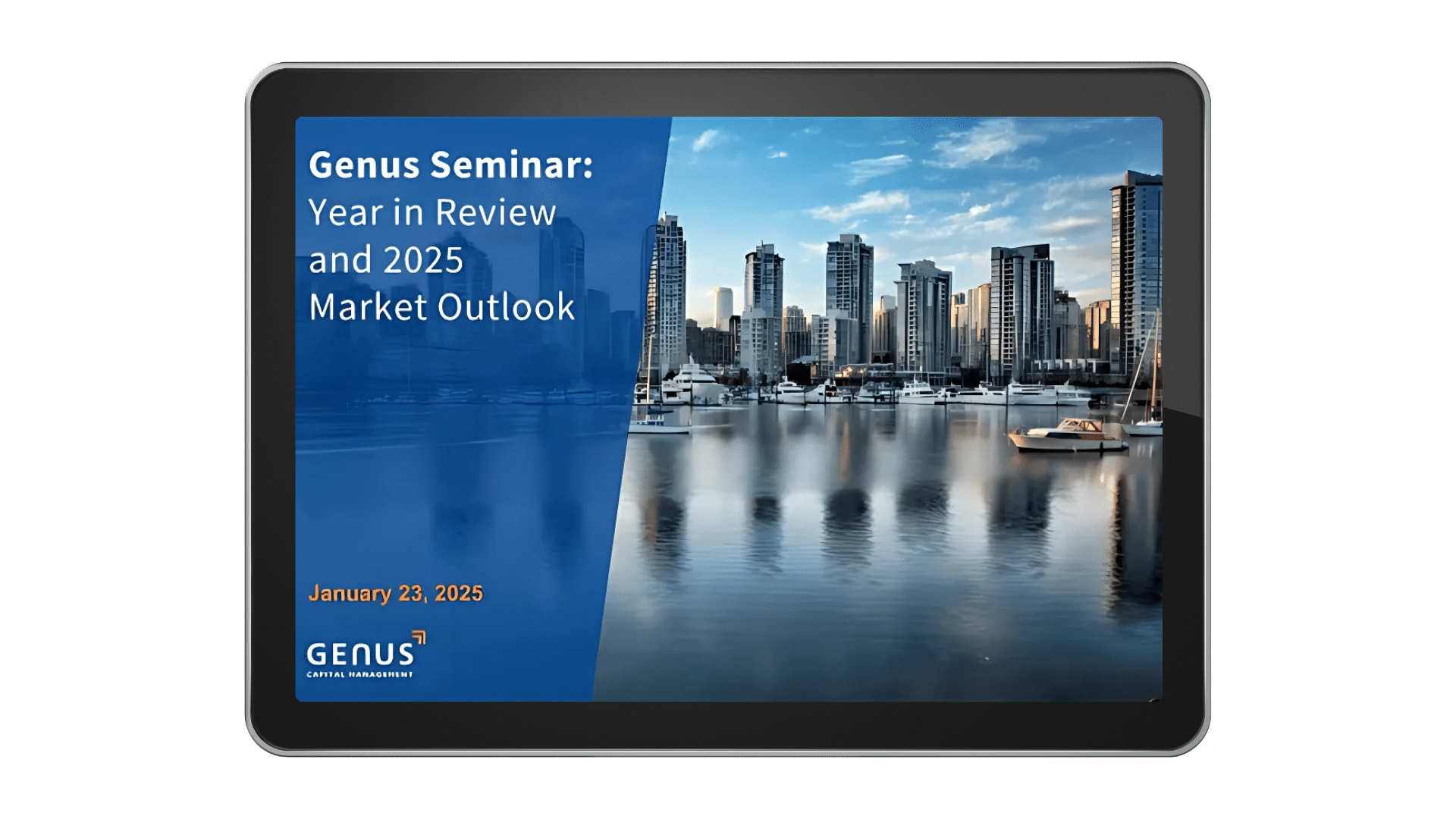While investing always comes with some degree of risk, in recent years, the definition of risk has broadened for institutional investors – and so has the urgency to mitigate it.
From market volatility and tightening regulations, to climate disruptions and shifting social expectations, pressures are mounting from all sides, making risk mitigation a key focus.
“Between volatility in the markets, geopolitical issues, climate change and even tariffs, a lot of foundations and non-profits are focused on risk,” says Kenneth Sinn, Institutional Client Relationship Manager at Genus. “This is not only because they need to make sure their portfolio has enough funding for grants and programmatic initiatives, but also because they need to manage reputational risks and future-proof their organizations.”
As risk mitigation takes centre stage, a silver lining has emerged for impact investors: many institutions are finding that aligning their investment portfolios with their values can strengthen long-term resilience.
Reframing risk from a values lens

Traditional risk management relies heavily on financial metrics and conventional approaches to investing – maximizing returns and minimizing losses. But evaluating investments from a financial lens alone can leave blind spots around other types of risks, such as reputational, fiduciary and societal dimensions of risk.
“When institutions take a purely financial view of risk, they often miss issues that can erode value over the long term,” Sinn says. “By layering in a values-based perspective, you can identify risks – and opportunities – that aren’t as obvious on a balance sheet.”
Values-based investing connects financial decision-making with environmental, social and governance realities, ensuring portfolios reflect both long-term resilience and organizational missions. Here’s an example of what that can look like.
Sustainable investing strategies may help manage certain risk

One of the biggest threats humanity faces today is climate change. But that risk also extends well beyond the immediate physical consequences of climate-induced catastrophes. From an economic and financial perspective, climate change threatens the global – and local – economies. One estimate puts the financial risk at $1.2 trillion in annual corporate losses by 2050 if climate adaptation measures aren’t put in place. “The transition to a low-carbon economy is reshaping markets, and those who adapt early will be more resilient in the long run,” Sinn says. “Institutions that prioritize climate resilience and sustainable business models are better equipped to protect their capital and capture long-term growth opportunities.”
Institutions that embed ESG principles into their portfolios are often able to gain early-warning signals for hidden vulnerabilities. For example, companies investing in climate-proof infrastructure or transitioning toward renewable energy are better positioned to weather regulatory and environmental shifts.
Studies suggest that portfolios incorporating ESG factors also experience lower volatility during downturns, while positioning investors for emerging opportunities in sustainable growth sectors. Conversely, companies that ignore climate risks can get punished by markets. According to a 2024 EY institutional investor survey, that’s one of the reasons institutional investors look to climate change as a driver of their investment strategies.
Future-proofing with values-based investing

As the next decade continues to bring unprecedented challenges, foundations and institutions can do more than ride out market cycles: they can actively build resilience with a deliberate strategy to anticipate and withstand risk. Here’s how:
- Establish a long-term investment policy. Create a clearly defined policy that will help your organization anchor investment decisions to organizational goals – and provide a steady framework for navigating uncertainty.
- Diversify across sectors and asset classes. A balanced portfolio cushions against volatility and ensures organizations aren’t overexposed to any single risk.
- Make use of shareholder voice. Through active engagement as shareholders, investors can influence corporate behaviour by voting for proposals that align with their mission – or against governance practices that heighten risk. At Genus we do this on behalf of our clients through our shareholder engagement and proxy voting programs. participating in AGMs for all of our holdings.
- Revisit your investment plan annually. As your needs, mission and values evolve, be sure to review your investment policy to keep your portfolio responsive to change.
By embedding ESG principles and a values-based lens into institutional investing strategies, foundations and organizations not only reduce risks – they position themselves to seize emerging opportunities in a changing economy.
After all, minimizing risk and future-proofing aren’t just about protecting your organizational capital. They’re about ensuring you can deliver on your mission – even in a changing world.
Learn more about institutional investing with Genus or contact us to talk to an institutional investment expert on our team.
Impact investments involve financial risk, and returns are not guaranteed. Investors should consider their financial goals, risk tolerance, and consult a financial professional before investing. Sustainable investing does not eliminate market risk, liquidity risk, or systemic risk.
References:
Chen, J. (2025a, May 9). Risk: What it means in investing and how to measure and manage it. Investopedia. https://www.investopedia.com/terms/r/risk.asp
- Climate change the greatest threat the world has ever faced, UN expert warns. (2022, October 21). United Nations. Retrieved September 16, 2025, from https://www.ohchr.org/en/press-releases/2022/10/climate-change-greatest-threat-world-has-ever-faced-un-expert-warns
- Investing in climate adaptation is no longer optional. It’s business-critical. (2025, July 3). Reuters. Retrieved September 16, 2025, from https://www.reuters.com/sustainability/sustainable-finance-reporting/investing-climate-adaptation-is-no-longer-optional-its-business-critical-2025-07-03/?utm_source=chatgpt.com
- Baselli, V. (2024, April 15). Why a portfolio with low ESG risk can better withstand a market crisis. Morningstar, Inc. https://www.morningstar.com/sustainable-investing/power-esg-higher-returns-lower-volatility?utm_source=chatgpt.com
- Companies ignoring climate risks get punished by markets, new study reveals. (2024, April 24). ScienceDaily. https://www.sciencedaily.com/releases/2024/04/240402140400.htm
- Dr. Matthew Bell. (2024, December 10). How can investors balance short-term demands with long-term value? My EY. Retrieved September 16, 2025, from https://www.ey.com/en_us/insights/climate-change-sustainability-services/institutional-investor-survey?utm_source=chatgpt.com











